Learning How To Water Ski
Essential Tips

Welcome to the captivating world of water skiing – a sport that blends the tranquillity of open water with the adrenaline rush of high-speed pursuits. Whether you're a thrill-seeker with a love for water sports, an outdoor enthusiast looking for your next adventure, or someone seeking a fun, full-body workout, water skiing could be your next great passion.
In this article, we'll delve into the heart of water skiing, exploring its history, understanding the necessary equipment, learning the basic techniques and more, so you can discover this amazing sport and learn everything you need to know!

Understanding Water Skiing
From its origins as a novelty pursuit in the early 20th century, water skiing has since blossomed into a globally recognised sport, with an enthusiastic community of participants and spectators alike.

The beauty of water skiing lies not only in the physical strength, skill, and agility required but also in the deep connection with nature that the sport offers. Imagine the serene environment of a lake, the rhythmic sound of the boat's engine, the misty spray of water in the air, and the exhilarating sensation of gliding smoothly over the water's surface. It's a potent combination of elements that are sure to captivate.
Moreover, water skiing is a sport that doesn't discriminate – whether you are young or old, an experienced athlete, or a novice at sports. With the right equipment, guidance, and plenty of practice, virtually anyone can learn to water ski. The sport offers room for continuous progression, making it an adventure that never truly ends.

Getting Started With Water Skiing
Water skiing is a sport that's as thrilling as it is rewarding. However, like any new skill, it requires understanding, preparation, and practice to master.
First and foremost, it can always be useful to familiarise yourself with the sport. Understanding the basics of water skiing, including its history, the different styles, and the general rules, can give you valuable insights into the sport and create a strong foundation for your learning journey.
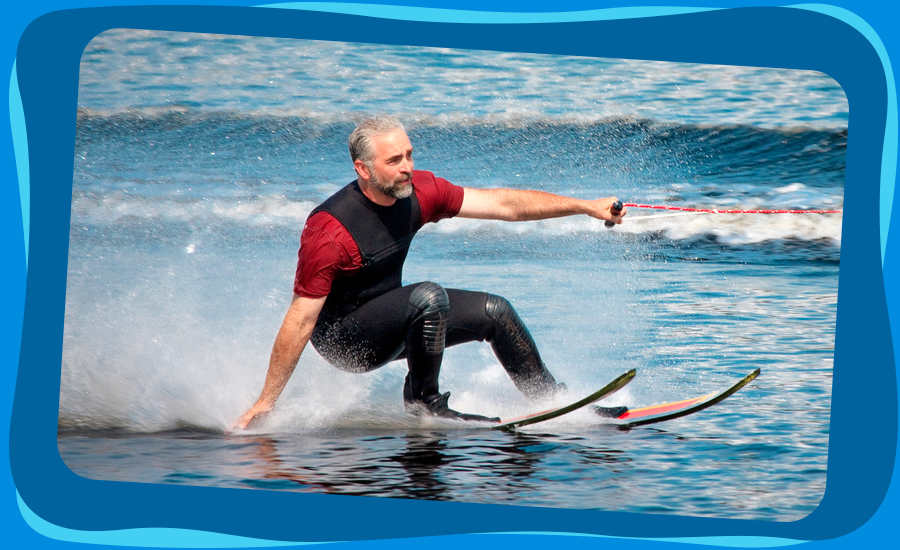
Next, you'll need to get acquainted with the necessary water skiing equipment. Water skiing requires more than just a pair of skis; you'll also need a fitting life jacket, a reliable tow rope, and a suitable boat. Each piece of equipment plays a crucial role in your water skiing experience, so understanding their functions, as well as how to choose and use them, is essential.
Once you're equipped with the necessary gear, it's time to hit the water. But, it's not just about strapping on the skis and hoping for the best. Water skiing is a skill-based sport, which means you'll need to learn specific techniques and strategies. From figuring out how to stand up on your skis for the first time to learning how to navigate turns, each stage of the learning process comes with its own set of challenges and triumphs.

Essential Water Skiing Equipment for Beginners
The correct equipment for water skiing not only ensures you can enjoy the sport to the fullest but also contributes significantly to your safety on the water.
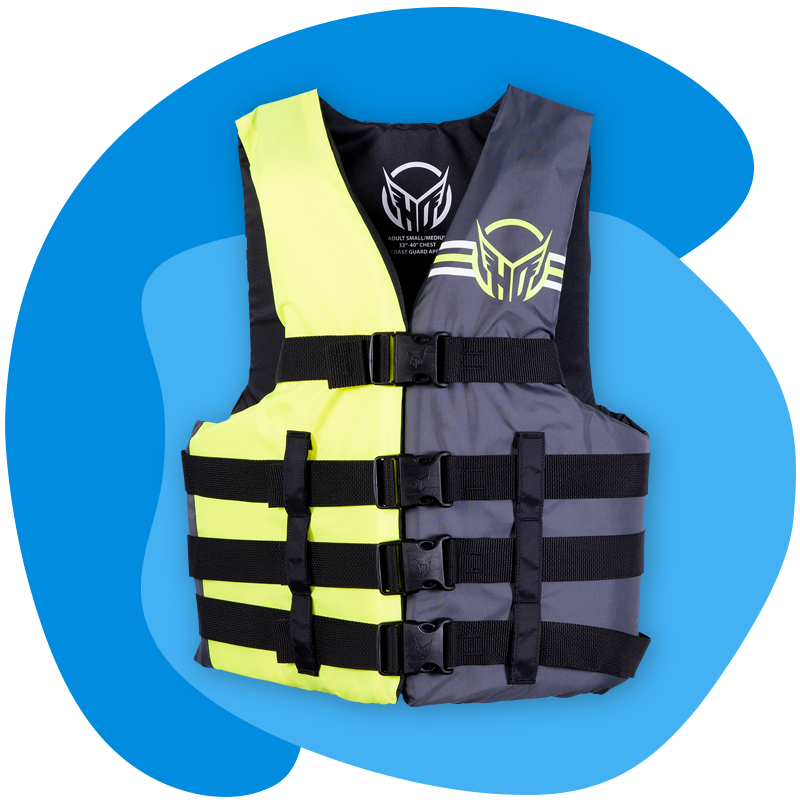
Water Ski Vests for Beginners
A water ski vest, commonly known as a life jacket, is a must-have for any water skier- beginner or advanced. The vest helps you float in the water, crucial for those moments when you fall or are waiting for the boat to circle back. But these vests aren't just about flotation – they also offer impact protection, helping to cushion any falls. Water ski vests come in different styles and designs. Some have extra padding for back support, while others feature segmented foam panels for added flexibility.
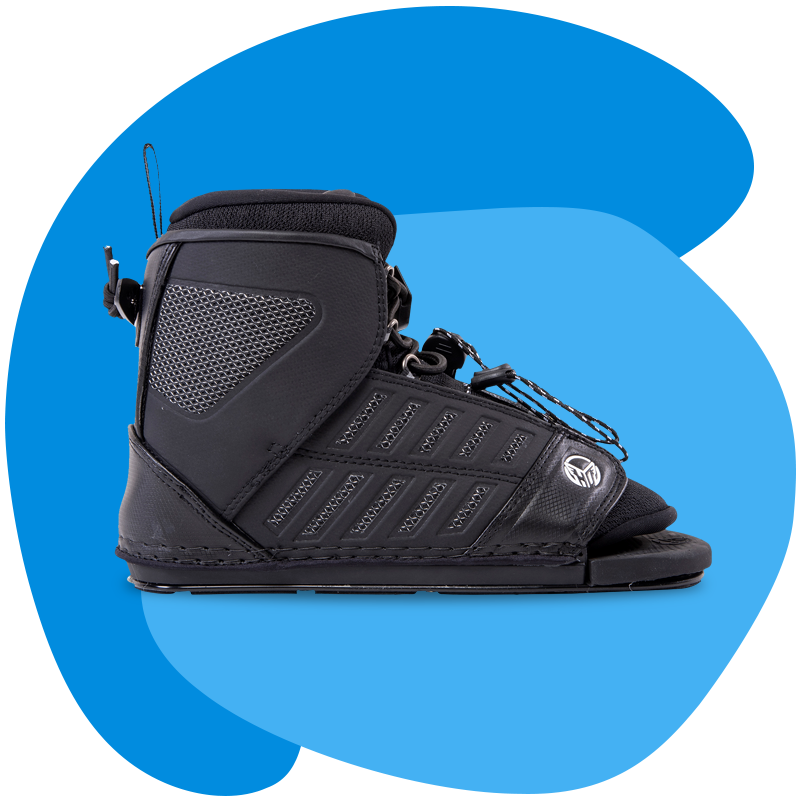
Water Ski Bindings for Beginners
The boots or bindings on your water skis are what connect you to your skis, providing control and direction as you glide across the water. Water ski bindings come in various styles, from adjustable slip-ons that can accommodate a range of foot sizes to more specialised, form-fitting boots for advanced skiers. As a beginner, adjustable bindings that offer a snug, secure fit without compromising comfort are a good place to start.
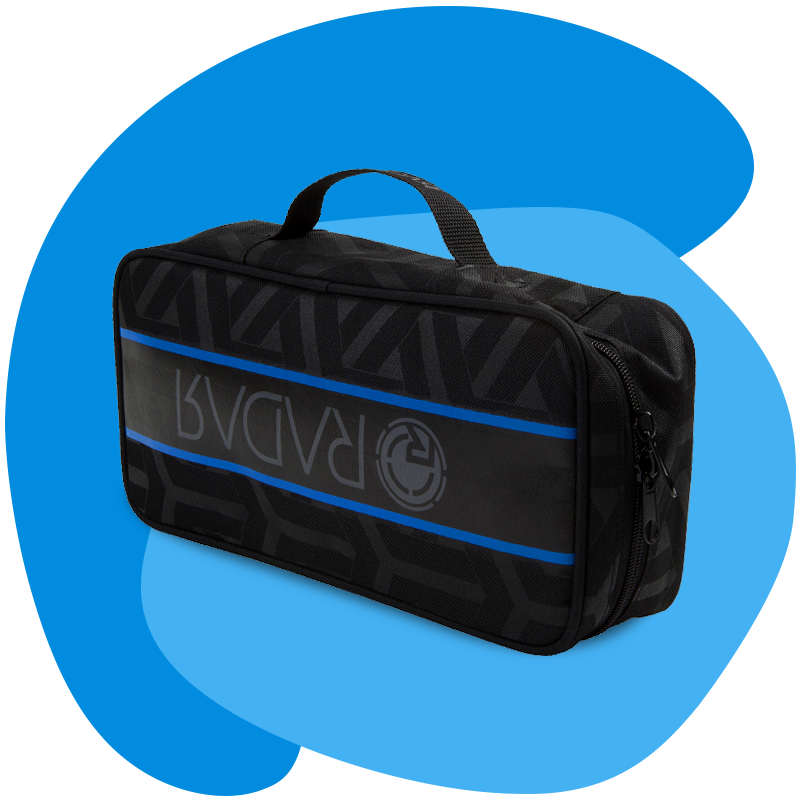
The Importance of Water Ski Bags
Water ski bags might seem like an afterthought, but they are actually an essential piece of equipment.
Not only does it make transporting your skis and other equipment easier, but it also provides protection, keeping your gear safe from damage during storage and transportation.
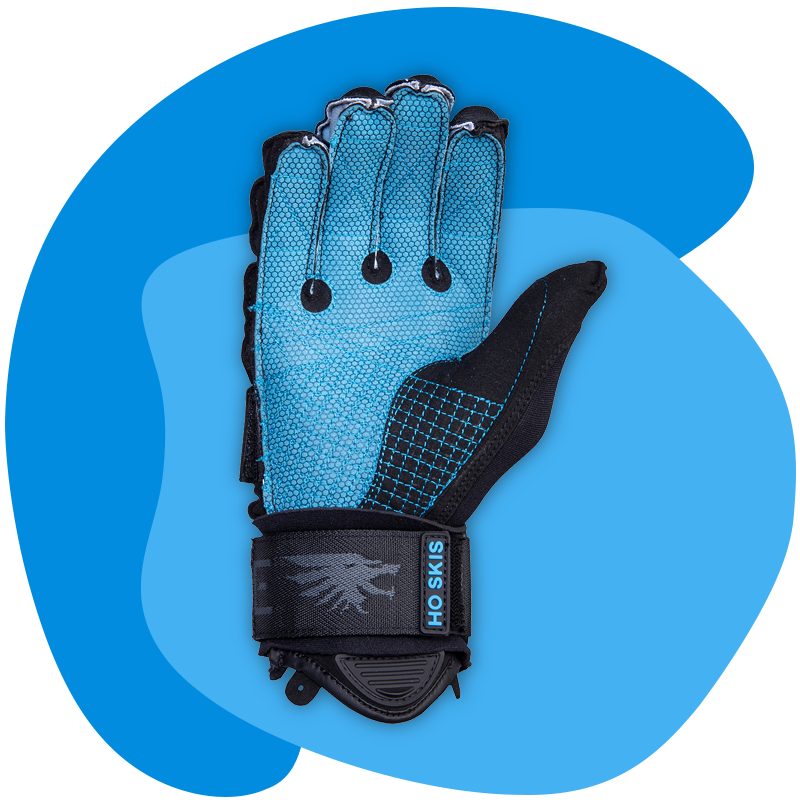
Water Ski Gloves for Beginners
While not strictly necessary, water ski gloves can significantly enhance your skiing experience as a beginner to the sport. Gloves provide a better grip on the handle, reducing the chance of your hands slipping off during a ski. They also protect your hands from blisters and calluses, which are common issues for frequent skiers. When choosing gloves, look for a pair with good grip and durability. Fit is also essential- your gloves should fit well, not too tight that they cut off circulation, but not so loose that they can slip off.
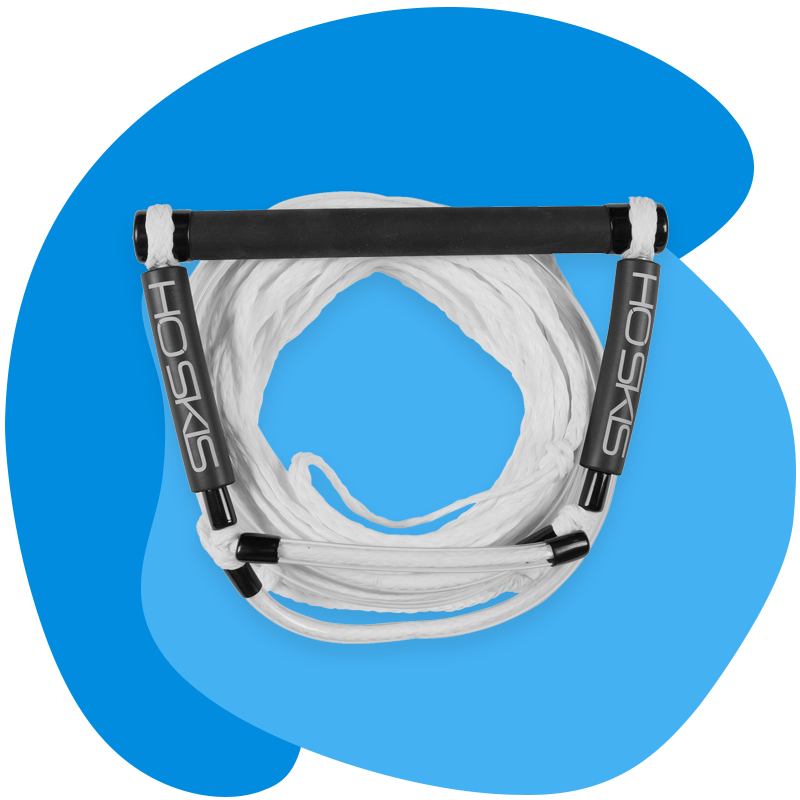
Water Ski Ropes & Handles for Beginners
The water ski rope, often called a tow rope, and the handle are your connection to the boat. The rope must be strong enough to withstand the tension created as the boat pulls you through the water, and the handle needs to be comfortable and easy to grip. As a beginner, you might want to consider water ski ropes and handles with a deep V-bridle at the handle end, as this helps keep your skis aligned as you learn to get up out of the water.
Selecting Your First Water Skis
Stepping into the world of water skiing means investing in a pair of water skis that will become a vital part of your sporting equipment. Choosing your first pair is a significant decision, and understanding the factors that should guide your choice is crucial.
Water skis come in different types, each designed to cater to specific styles of skiing and skill levels. As a beginner, your primary focus should be on combo skis or beginner slalom skis.
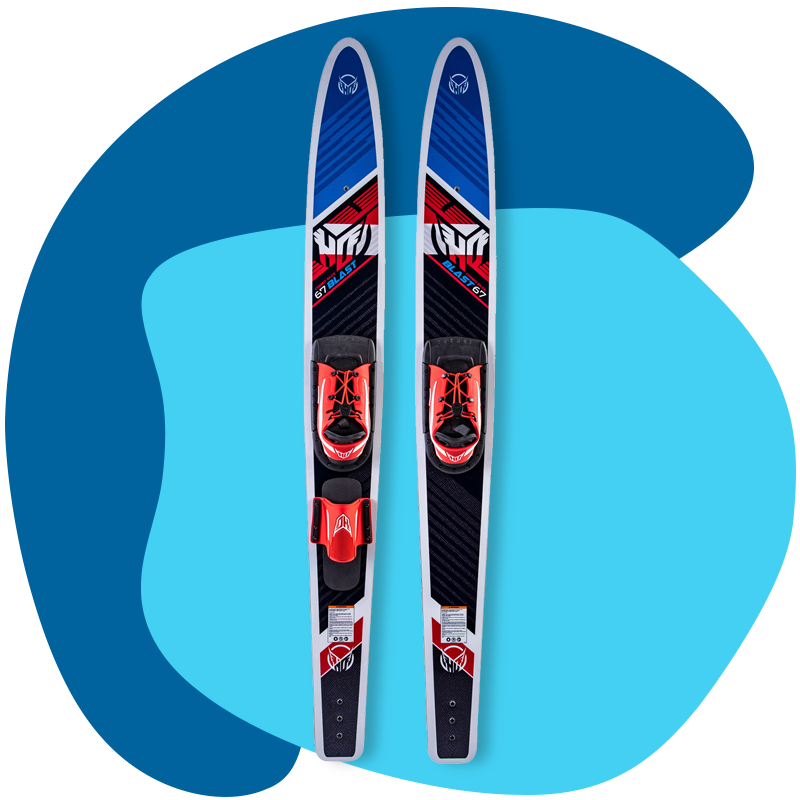
Combo Skis
Combo skis are excellent for beginners because they are designed with a wider nose and tail, which helps to increase stability on the water. They also usually come with adjustable bindings to accommodate different foot sizes and a rear crossbar to help beginners keep their feet in the correct position during the start.
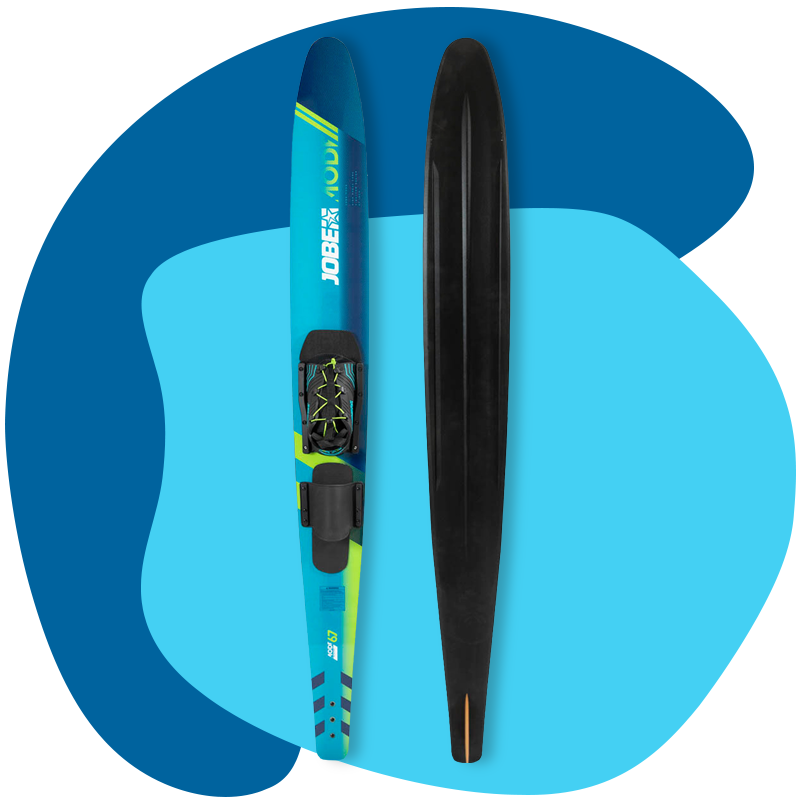
Beginner Slalom Skis
If you're already certain that slalom skiing is your end goal, you might want to start with a beginner slalom ski. These skis are usually a bit narrower than combo skis but still offer enough stability for a novice. They come with a single binding for your front foot and a smaller binding or slip for your rear foot.

Water Skiing Skills & Techniques
Water skiing is a skill-based sport, and understanding the fundamental techniques is essential to enjoy and excel at it. From the basic stance to navigating sharp turns, let's dive into the critical water skiing skills and techniques that beginners need to know.

The Basic Stance
Just as building a house requires a solid foundation, water skiing demands a basic stance. The correct stance is the key to maintaining balance, controlling your skis, and, ultimately, staying on your feet. Here's what an ideal water skiing stance should look like:
Body Position: You should maintain a relaxed, semi-crouched position. Bend at your knees and hips, as if you were sitting back on a chair, but keep your chest lifted. Your shoulders should be level, and your back should remain straight.
Arm Position: Your arms should be extended straight out in front of you, holding onto the handle, but they shouldn't be rigid. Keep them relaxed and slightly flexible to absorb any bumps or jumps in the water.
Weight Distribution: Your weight should be distributed evenly over both skis. However, if you're slalom skiing (using one ski), keep your weight slightly favouring the front foot to maintain control.
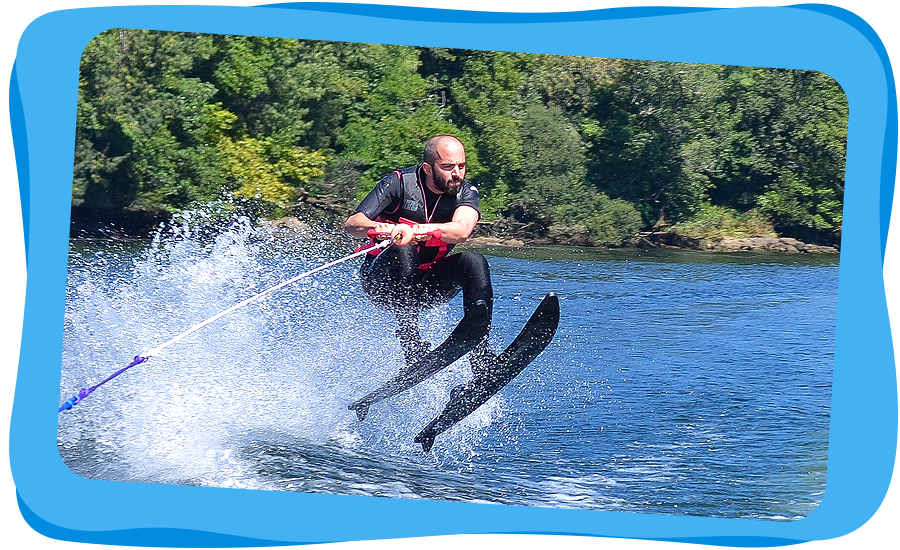
Learning How To Get Up On Water Skis
For many beginners, the first major hurdle is learning how to get up on the water skis. It may seem daunting, but with the right technique and a little patience, you'll be up and gliding in no time.
Step 1: Start in the water with your skis in front of you. Your knees should be bent, and your skis should be sticking out of the water slightly.
Step 2: Hold onto the handle, keeping your arms straight. The ski rope should be positioned between your skis.
Step 3: Signal to the boat driver to start. As the boat starts moving, you'll feel a gentle pull. Resist the urge to stand up too quickly.
Step 4: Let the increasing speed of the boat pull you up. Keep your weight back, and let your hips move forward to stand up. It's almost like you're moving from a sitting position to a standing one.
Step 5: Once you're up, shift into your basic stance: arms straight, body slightly crouched, back straight, and eyes on the horizon.

Navigating Turns & Slalom Skiing
As you become more comfortable on your skis, it's time to start learning how to navigate turns and understand the basics of slalom skiing. Mastering these skills and techniques requires time, patience, and practice. The more time you spend on the water, the more comfortable you will become, and soon, these skills will feel like second nature.
Turning: To initiate a turn, gently shift your weight in the direction you want to go. If you want to turn right, shift your weight slightly to the right ski, and vice versa for a left turn. Remember to keep your body position centred and your eyes looking ahead, not at the skis.
Slalom Skiing: Slalom skiing involves navigating a course of buoys on one ski. As a beginner, your first step towards slalom skiing is learning to ski on one ski. You can start by lifting one ski slightly out of the water while you're skiing and gradually shifting more weight onto the other ski. Once comfortable, you can move onto a single slalom ski. Remember, in slalom skiing, maintaining the correct body position and effectively shifting your weight to turn around the buoys is crucial.

Safety First: Essential Tips
Engaging in any water sport, water skiing included, carries inherent risks. It's a thrilling adventure that requires both physical exertion and interaction with open water environments. However, by adhering to safety guidelines and taking precautions, you can ensure your time on the water is not only fun but safe as well. Here are some key safety tips for beginners stepping into the world of water skiing:
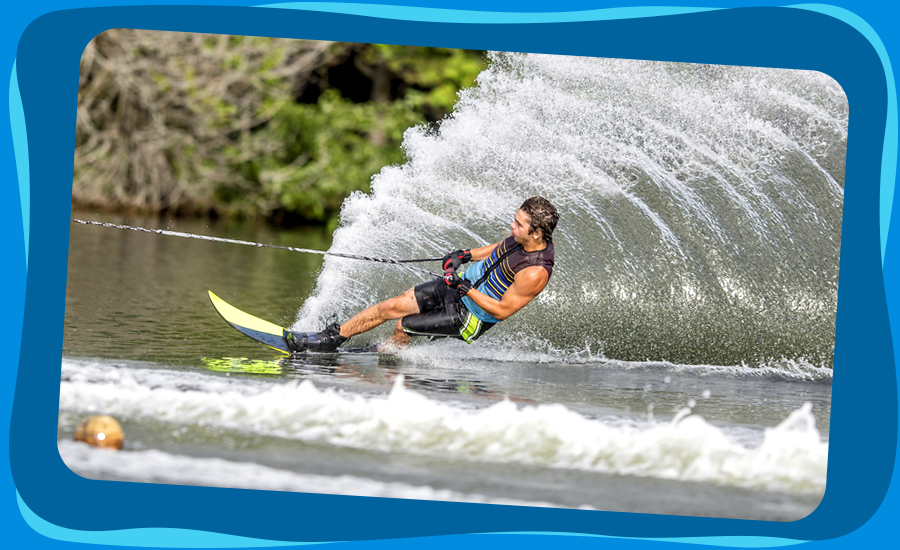
Wear Appropriate Safety Gear
Before you even get on the water, it is essential that you make sure you are equipped with the necessary safety gear. For example, a life jacket is a non-negotiable piece of safety equipment. It should fit well and be suitable for your weight and size, and it can also be useful to opt for a bright colour to ensure visibility in the water. While not always required, a helmet can be a good idea, especially for beginners too, as it can help protect against potential head injuries during falls.
Understand Basic Hand Signals
Communication between the skier and the boat driver is crucial. Hand signals are a simple and effective way to communicate your intentions or needs. Some essential signals include:
Thumbs Up: Speed up
Thumbs Down: Slow down
Hand Cutting Across the Neck: Stop
Patting the Head: Return to the dock
It can be useful to take some time before you get on the water to ensure both you and the boat driver understand these signals.
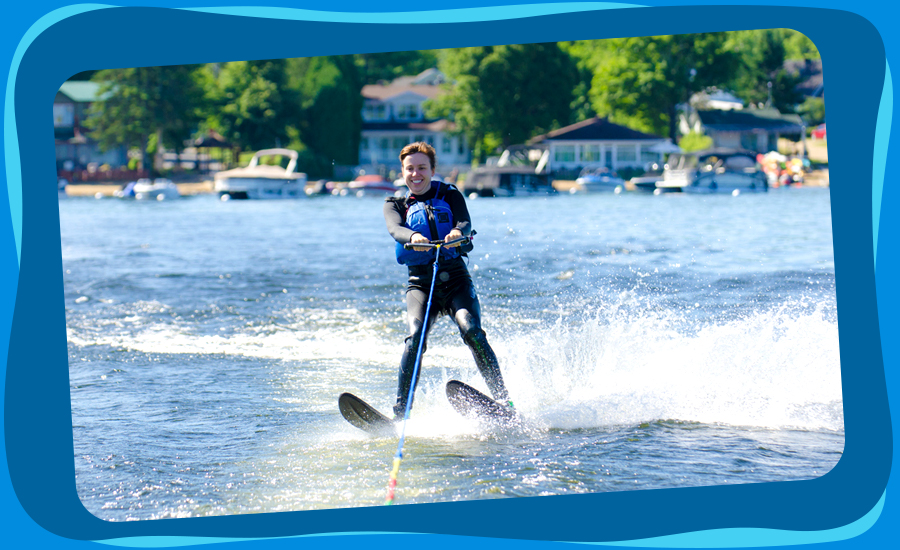
Always Have a Spotter
A spotter is a person on the boat responsible for watching the skier at all times. The driver may not always have a good view of the skier, making the spotter's role crucial. The spotter can alert the driver if the skier falls, if the tow rope becomes entangled, or if there are other issues.
Stay Aware of Your Surroundings
Being aware of your surroundings on the water is critical. This includes paying attention to other boats, swimmers, or potential obstacles in the water. It's also essential to keep an eye on the weather conditions, as unexpected changes in weather can make water skiing unsafe.
The Importance of Starting Slow
As a beginner, it's important to start slow and progress at your own pace. There's no need to try high speeds or complicated manoeuvres right away. As you gain more experience and confidence, you can gradually increase your speed and start trying new techniques.
Regular Equipment Checks
It’s essential to regularly check your equipment for any signs of wear and tear. This includes the tow rope, the bindings on your skis, and your safety gear, as damaged equipment can pose a serious risk. Water skiing is an exhilarating sport that combines the thrill of speed with the beauty of the water. However, it's essential to remember that your safety is paramount. By keeping these tips in mind and always prioritising safety, you can ensure that your water skiing adventure is a safe and enjoyable one.
Water Skiing FAQs
What Is Slalom Water Skiing?
Slalom water skiing is a particular form of water skiing that involves navigating a course of buoys on a single ski, rather than two. The skier is pulled by a boat while they attempt to cross back and forth across the boat's wake to pass each buoy on alternate sides. It's a thrilling test of agility, balance, and control, requiring the skier to make rapid, precise movements. While slalom skiing is more advanced than basic two-ski water skiing, it's a goal many water skiers aspire to as they progress in the sport.
How Long Are Water Skis?
The length of water skis varies depending on the skier's weight, the ski design, and the type of skiing. For beginners, combo skis, which are typically used, range from about 63 to 68 inches. It's important to note that heavier skiers require longer skis because the increased surface area helps to distribute the skier's weight over the water more effectively. On the other hand, advanced skiers, particularly slalom skiers, might prefer shorter skis that allow for sharper, faster turns.
How Hard Is It To Water Ski?
The difficulty of water skiing can depend on several factors, including the individual's fitness level, comfort in the water, balance, and coordination. Like any sport, it takes practice and patience to get the hang of it. However, most beginners can get up on their skis and start skiing short distances after a few attempts. As a beginner, it's essential not to be disheartened by early challenges. The fun of water skiing comes from the steady progress you make, and each time you get back on your skis, you'll likely see improvement.
Can Anyone Water Ski?
Most people can indeed learn to water ski, regardless of age or fitness level. It's a popular family sport, with children as young as five or six able to learn under proper supervision, and many older adults enjoy the sport as well. That said, water skiing does require a certain level of physical fitness, particularly core strength and balance.
How Slow Can You Water Ski?
The speed for water skiing varies depending on the skier's skill level and comfort. For beginners, a slower speed of about 20-25 mph is common. This speed gives enough force to keep the skier upright and in control but is slow enough to minimise risks during inevitable falls. As skiers gain confidence and improve their technique, the boat speed can gradually increase. Advanced skiers, especially those doing slalom skiing or jumps, can ski at speeds upwards of 30 mph. However, safety should always be the top priority, and you should never ski at a speed that makes you feel uncomfortable.


